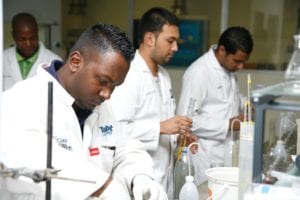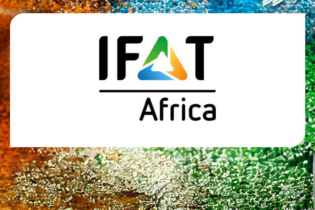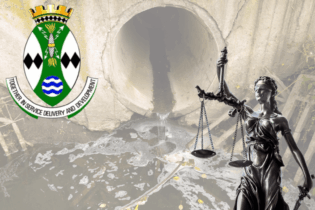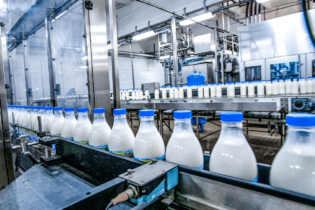South Africa is a water-stressed country. Being semi-arid with limited annual rainfall supply and a lack of perennial streams, the future implications of population growth combined with the uncertainty of climate change are likely to have significant financial, human and ecological impacts on already scarce water resources. Much of South Africa’s water supply originates from groundwater sources. These occur widely and geographically and almost two thirds of South Africa’s population depend on it for their domestic water needs.
On a global scale, groundwater is an essential freshwater resource for both socio-economic and environmental systems, and forms a critical buffer during periods of drought. This makes the protection of groundwater supplies (management, pollution control and remediation) essential, particularly in developing countries where groundwater management is neither strongly emphasised in national water legislation, nor implemented where it is needed. Groundwater is water that exists in the pore spaces and fractures in rock and sediment beneath the Earth’s surface. It is naturally replenished by surface water from precipitation or snow, and then moves through the soil into the groundwater system where it recharges the water table. Groundwater sources are generally extracted through the construction and operation of extraction wells or bore holes. In areas where rural infrastructure is minimal, rural communities will often rely on more informal, traditionally developed groundwater sources such as hand-dug wells, springs and sand abstraction. Currently, South Africa’s groundwater resources supply approximately 15% of the total volume of water consumed nationally . Of this, almost 64% is used for agricultural irrigation purposes, while exploitation for mining and domestic consumption constitutes 8%. Despite our reliance on groundwater, it has remained a poorly understood and managed resource, most likely due to its ‘hidden’ nature and the lack of adequate knowledge and physical data pertaining to aquifer characteristics and behavior such as recharge, discharge, base flow and aquifer dependent ecosystems. Most groundwater quality and quantity problems in South Africa are related to human activities such as industry (e.g. infiltration of chemicals and toxins) and mining (e.g. acidification and increased metal content), urban development (e.g. salinisation, eutrophication, microbial effects) and the intensification of agricultural practices (e.g., sedimentation, infiltration of agro-chemicals and salinisation through irrigation return flows). Deteriorating standards in wastewater treatment, agricultural drainage, land use patterns and waste disposal intensify the problem. Contaminants either seep through the soil to reach the water, are washed into the ground by rainfall or surface run-off, or leach from contaminated landfills and other buried hazardous wastes, all of which affect both human well-being and ecosystem functioning. Millions are spent every year on control and remediation measures even though remediation is difficult and extremely costly. Remediation of soil and groundwater is usually carried out by government agencies, or environmental companies, with the first step being the identification of the contaminants. The analysis and classification of the pollutant(s) is critical in that it enables identification of appropriate solutions for remediation. Analyses are performed by internationally recognised environmental laboratories that can provide expert interpretative data to consultants who are then able to make recommendations on and implement remediation measures.Reliable data is vital for making informed decisions. Once identified, the contaminant is either physically removed to a landfill site or subjected to chemical oxidation methods, which remove the pollutant from the soil before it is reintroduced back into the environment. Specialised mechanical techniques in the form of pump-and–treat methods are used, or the area is rehabilitated in-situ with the use of microorganisms.
Although groundwater is a vital source of water for many and has given rise to several short and medium-term socio-economic benefits, the additional pressure on the resource has put many aquifers at risk due to high extraction rates. Until 1998, groundwater was considered a privately-owned asset (under the traditional riparian system). However, after the promulgation of the new National Water Act, groundwater was declared a public resource with shared entitlements to use, therefore exposing the resource to further exploitation. Although provision was made for the management of groundwater resources under the Department of Water Affairs, the motivations behind the regulations and guidelines have been difficult to account for and implement on a regional level and subsequently are largely overlooked or neglected . Thus, there are still many challenges to overcome to achieve the sustainable management, appropriate allocation and protection of South Africa’s groundwater resources. Perhaps the most significant challenge is education and awareness, and the collaboration between stakeholders on the importance of sustainable and efficient groundwater use (and monitoring). Greater awareness and understanding, as a first step, will allow for the timeous assessment of the occurrence and extent of pollution and assist with the proactive management of groundwater pollution in South Africa. Talbot Laboratories routinely analyses groundwater samples and can provide interpretative data to assist in remediation measures. Talbot Laboratories, a division of Talbot & Talbot (Pty) Ltd, achieved ISO 25 accreditation through SANAS in 2001, upgraded to ISO 17025 in 2005 and, to date has successfully maintained this status through its consistently high standard of operation and quality. It also analyses industrial effluent, landfill leachates, marine water, marine sediments and solid waste for classification for disposal to landfill sites. Additional services offered by the laboratory include on-site sampling, consultation and interpretation of results. For your analytical requirements contact Talbot Laboratories on 033 3461 444 or www.talbot.co.za







